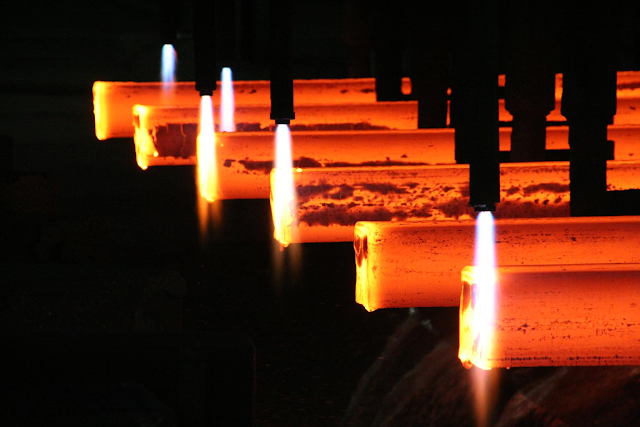What are the Characteristics of the Structure of the Continuous Casting Machine?
What are the Characteristics of the Structure of the Continuous Casting Machine?
The continuous casting machine is mainly composed of a ladle carrier, a tundish, a tundish carrier, a crystallizer and its vibration device, a secondary cooling device, a straightening straightener, a spindle device, a cutting device, and a casting blank delivery device.
1) The ladle carrier mainly has two methods: pouring car and ladle turret. At present, most of the newly designed continuous casting machines use ladle turret. Its main function is to carry ladle and support the ladle for pouring operations. The ladle turret can also be used to quickly change the ladle to achieve multi-furnace continuous casting.
2) The tundish is a transition device between the ladle and the crystallizer for receiving molten steel. It is used to stabilize the flow of steel, reduce the erosion of the billet in the crystallizer by the flow of steel, and make the molten steel reasonable in the tundish. The flow and appropriate long residence time to ensure the uniform temperature of the molten steel and separation of non-metallic inclusions. For multi-stream continuous casting machines, the molten steel is split by a tundish. In the multi-furnace continuous casting, the molten steel stored in the tundish plays a role in the replacement of the ladle.
3) The tundish carrier has a tundish and a tundish turret, which is used to support, transport, and replace the tundish.
4) The crystallizer is a special water-cooled steel mold. The molten steel is cooled in the crystallizer, initially solidified and formed into a certain thickness of the shell to ensure that the shell is not pulled when the strand is pulled out of the mold. No defects such as deformation and cracks are generated. Therefore it is the key equipment for the continuous casting machine. The crystallizer vibrating device enables the crystallizer to reciprocate up and down according to certain requirements, preventing the primary green shell from being cracked by sticking to the crystallizer.
5) The secondary cooling device is mainly composed of a water spray cooling device and a slab support device. Its function is to directly spray water to the slab to completely solidify; the slab with the wick is supported and guided by the nip roller and the side knives to prevent the slab from bulging, deformation, and steel leakage.
6) The function of the straightening machine is to overcome the resistance of the casting blank and the crystallizer and the secondary cooling zone during the casting process, smoothly pull the casting blank, and straighten the curved casting blank. It also feeds the starter unit into the mold before pouring.
7) The ingot device includes two parts, a spindle head, and a spindle rod. Its function is to act as a "live bottom" of the crystallizer during the pouring, blocking the lower mouth of the crystallizer and allowing the molten steel to be in the spindle head. The solidification is carried out; the casting blank is pulled out from the lower mouth of the crystallizer by the pulling rod by the pulling of the tension leveler. When the spindle rod is pulled out of the tension leveler, the spindle rod is removed and the normal drawing state is entered.
8) The function of the cutting device is to cut it into the required length of the strand as it travels.
9) The casting blank delivery device includes a roller conveyor, a pusher, a cold bed, etc., which complete the transportation and cooling of the strand.




评论
发表评论